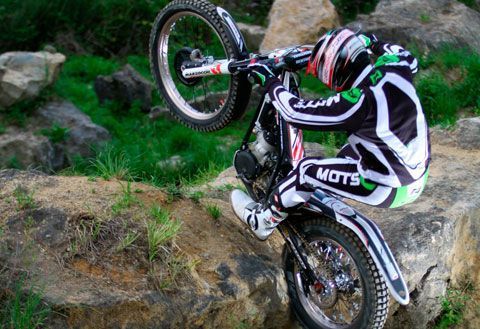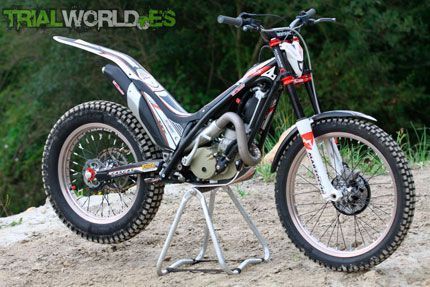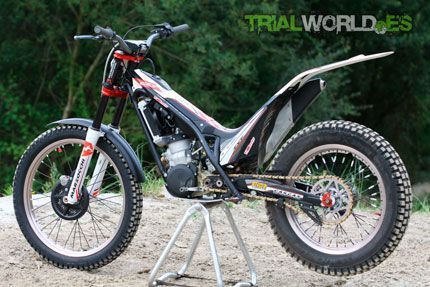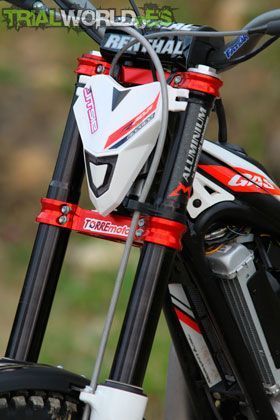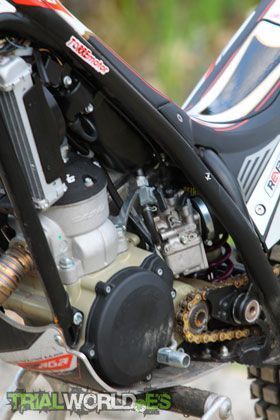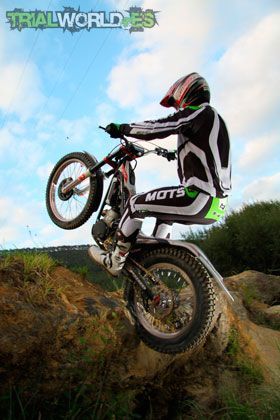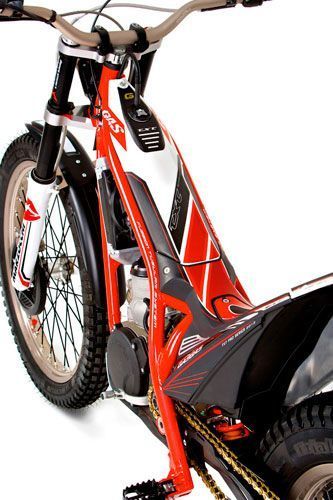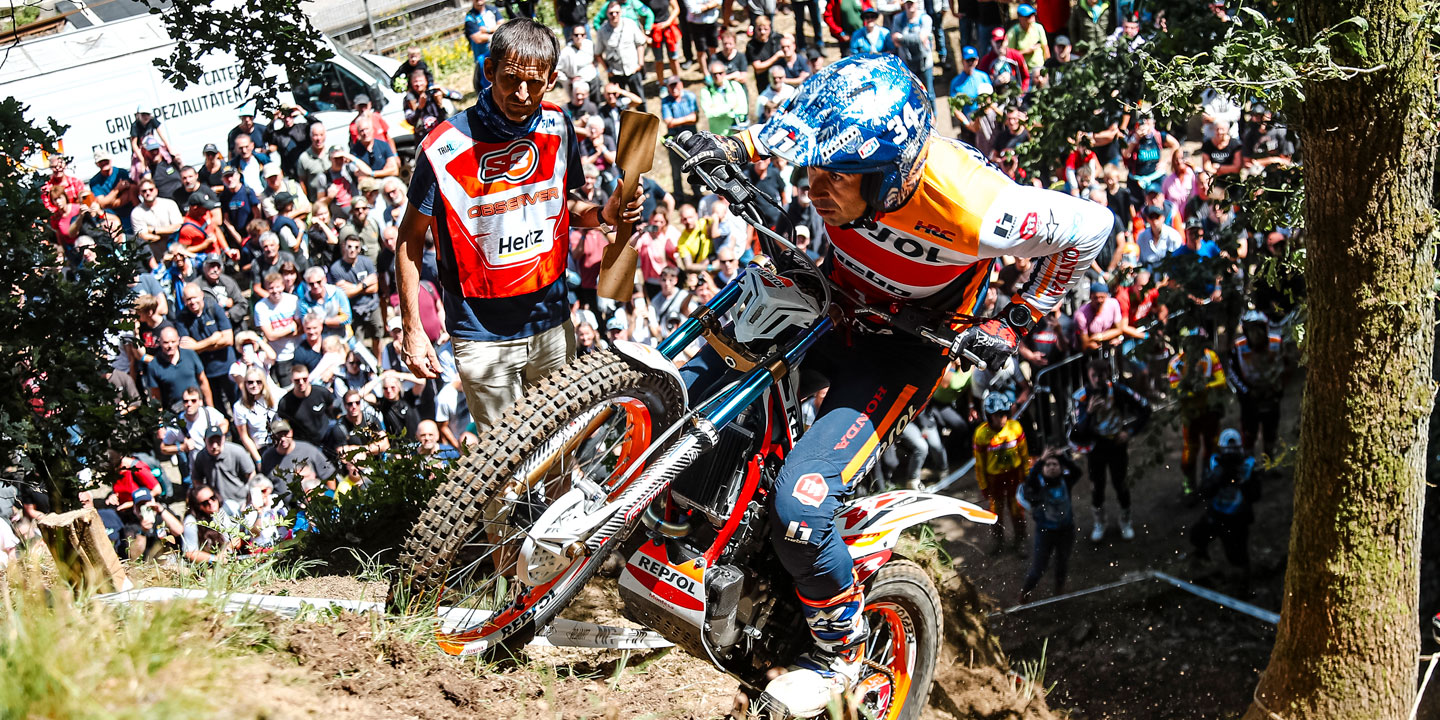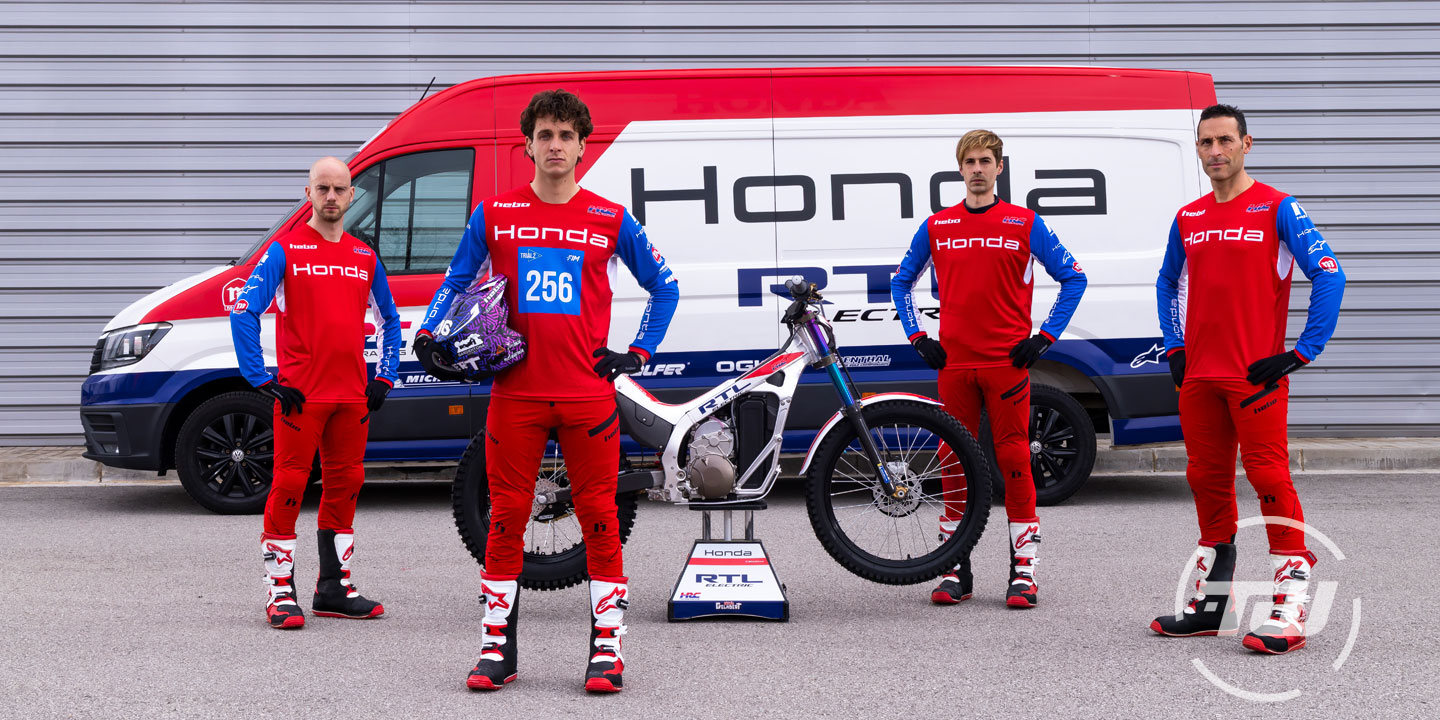Specifically, for nine editions now, Gas Gas offers us in the month of June a limited edition of its Trial version under the pseudonym “Raga Réplica”. In all of them there has been a common denominator: to represent a pre-series of the range that only a month or two later is presented as the standard TXT Pro, which for example this year will be the 2012, of which you can see the characteristics in this presentation.
Since 2003, the same philosophy has been maintained, but trends have changed a lot. Magnesium components began to be massively bet on in almost unthinkable places , such as the swingarm, which proved to be a failure due to its poor old age and durability. To this day, only the crankcases remain of magnesium, which have also historically had their conflicts. However, Gas Gas has gradually opted for other ways of differentiation in its “Raga Replica”, such as offering exclusive components that will not be seen on the standard motorcycle or simply offering a preview of the new motorcycle to the fan.
In 2011 Gas Gas has relaunched three different versions, all of them with a common change: the rear shock absorber. The standard version was equipped with Sachs, the Racing edition was based on Öhlins and finally the one we are dealing with shows off the brand’s new agreement with Reiger. From all this potpourri the only thing we can make clear is that the next 2012 range will come out again with Sachs and only a few privileged agile people will be able to enjoy a Gas Gas with Reiger shock absorber like the one we tested in these pages.
At the controls
At Trialworld we have worked on getting a strict series unit to carry out a dynamic test and tell you first-hand what are the sensations that the latest work of the Girona factory gives us. To do this, we contacted Torre Motor (Unquera – Cantabria) and they gave us a unit recently acquired and shot by its owner, Luis, in such a way that when it reached our hands it was already loose enough to make a report of these characteristics.
We were also accompanied in the race by César Carmona, well known by all Trial fans for his work at Gas Gas, where he became Jeroni Fajardo’s backpacker. Now he carries out his professional work at the head of Moting Parts as a distributor in Spain of major brands such as Reikor, Acerbis, Ermax, Gianelli and more that you can find on his website. César exclusively presented us with a new Trial kit called Mots on which he is working and will soon be available to all fans; In the photo gallery you can see how the rider of our session, Benjamín Torres, wears a kit with the corporate colors of Trialworld.
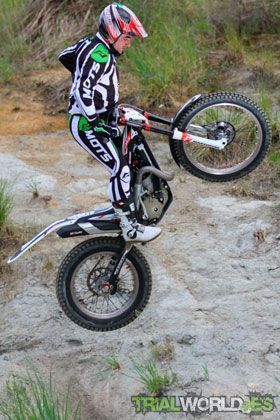
Another point to look at is the Suspension linkages, as that’s where The secret lies in the main dynamic difference of the 2012 range. These are shorter and allow the bike to go higher from behind, achieving A more balanced distribution of masses and better sensations on the front end. Contrary to what you might expect, the bike is not more stubborn or slower with these modifications, but simply gains in neutrality.
These linkages are the perfect complement to the splendid Rieger shock, which far exceeds the performance of the Sachs that mounts the 2012 range (and earlier) and the much-missed Öhlins (especially the gold) that mounted the 2006 version. The highlight is, without a doubt, his sensitivity in the first third of his journey. You feel that the bike is stepping perfectly at all times with firmness and the reactions are much sweeter than with the Sachs, something that is appreciated in riding at all levels.
The more experienced or exquisite have the opportunity to play with the settings of the shock itself to customize the performance, something that is not necessary for most mortals, since the standard tare is truly successful. Reiger’s other strength is its ability to absorb in heavy impacts. The bike does not move from the marked trajectory or respond to strangers; Wherever you aim, it climbs with exquisite smoothness. Undoubtedly, the changes in the rear axle maintain the positive line of work that Gas Gas has been maintaining in recent years, especially since 2011.
The negative note of this news is that the 2012 range returns to Sachs, a good shock without further ado. We understand that the Reiger is expensive and may not add up when it comes to mass-producing such long productions, but we would like to see the changes of the Raga Replica in the 2012 range, because after all it is where the whole public has their eyes set.
At the front, despite there being no changes other than aesthetics, the Gas Gas continues to boast one of the best forks on the market (with permission from the “defunct” Cota 4RT and equaling the Scorpa SY-R).
On a mechanical level we don’t find any changes, but this is not a major problem when the performance is optimal at all levels and we have three “fat” displacements to choose from to feel comfortable riding. For our taste, the ideal version is the 250 for its ease of riding, versatility and fun. It’s a very progressive, easy-to-read, and noble mechanic. It has good torque, but it starts smoothly from low revs and is more forgiving of the lack of feel in the right grip than its sisters.
However, as there are complexions and riding styles of all kinds, those of a higher level will probably opt for the 300 engine in order to get a more immediate and full response to the throttle hit. Contrary to what it may seem, the 300 is also a noble bike, because despite its higher torque, its response is very linear and easy to interpret. In addition, it is ideal for riders with classic style, who enjoy driving in high gears and prefer not to abuse the clutch in the zones. Of course, in return the 300 requires a lot of tact and less improvisation.
The 280 has always been the benchmark in displacement, or at least it was until a few years ago. It is a faster and more direct bike than its sisters, which is also demanding if we want to get the most out of its mechanics. However, there are many pilots who opt for this model without any hesitation. For our part, we can tell you that Raga and most of the top GG riders wear the 300, while the 250 is popular par excellence among amateurs.
The weak point in Gas Gas is the clutch. The “small” pump does a disservice to a spongy, characterless clutch. In addition, each Gas Gas clutch is different. Our advice is that, if you can, replace the small pump with a large one, which admits a flow rate similar to that of the brake pump; but be careful, that it is also made of mineral oil, otherwise the gaskets could be damaged (there are some that go with DOT4 liquid).
As you well know, the recently presented Gas Gas TXT 2012 hardly incorporates any changes compared to this test unit, so you can take it as a reference for this season.
These are the changes presented by the Gas Gas 2012 compared to the 2011:
* Marzzochi “White” fork following the same line as the Raga 2011.
* New decoration.
* Sachs rear shock (not Reiger) supported by new spec linkages.
* New seatposts with 10 degrees more swivel and triple clamping.
* Completely new front braking system, signed by AJP in the first versions (while stocks last) and later by “Formula”.
* New rear brake caliper.
* New chain and crown guard, inherited from the 2011 Raga.
* Improvements to the air filter box to improve tightness.
* New starter lever.
Text and photos: David Quer / With the collaboration of Torre Motor and Moting Parts, with Benjamín Torre and César Carmona
